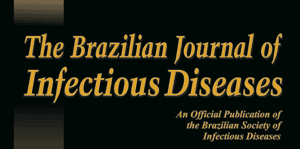Resumo em Inglês:
A study of the erythrocyte sedimentation rate during the first hour (ESR) in dengue patients would help determine how this parameter is affected by this disease, as well as whether it can be used for diagnosis. One thousand, three hundred and ninety-eight cases of dengue attended at the Dengue Treatment Center, Campos dos Goytacazes Rio de Janeiro, Brazil, were included. The ESR values were classified as normal or elevated and compared by gender and clinical form of the disease. Among the 1,398 cases ESR was normal in 81.25% (n = 1,136), while in 18.75% (n=262) it was elevated. In 83.92% (n=514) of the male dengue patients ESR was normal, while in 16.08% (n=98) it was elevated. Among female dengue patients, 79.17% (n=622) had normal ESR, and in 20.83% (n=164) ESR was elevated (p=0.05). Among patients with classic dengue, 77.28% (n=961) had normal ESR, while in 22.72% (n=282), it was elevated. Also in 85.81% (n=133) of patients with hemorrhagic dengue, ESR was normal, while in 14.19% (n=22) ESR was elevated (p=0.026). We concluded that ESR was within normal ranges in most dengue cases, independent of gender or clinical presentation. Given the high frequency of normality and the ease of determination of this parameter, ESR data can help in the differential diagnosis of dengue.
